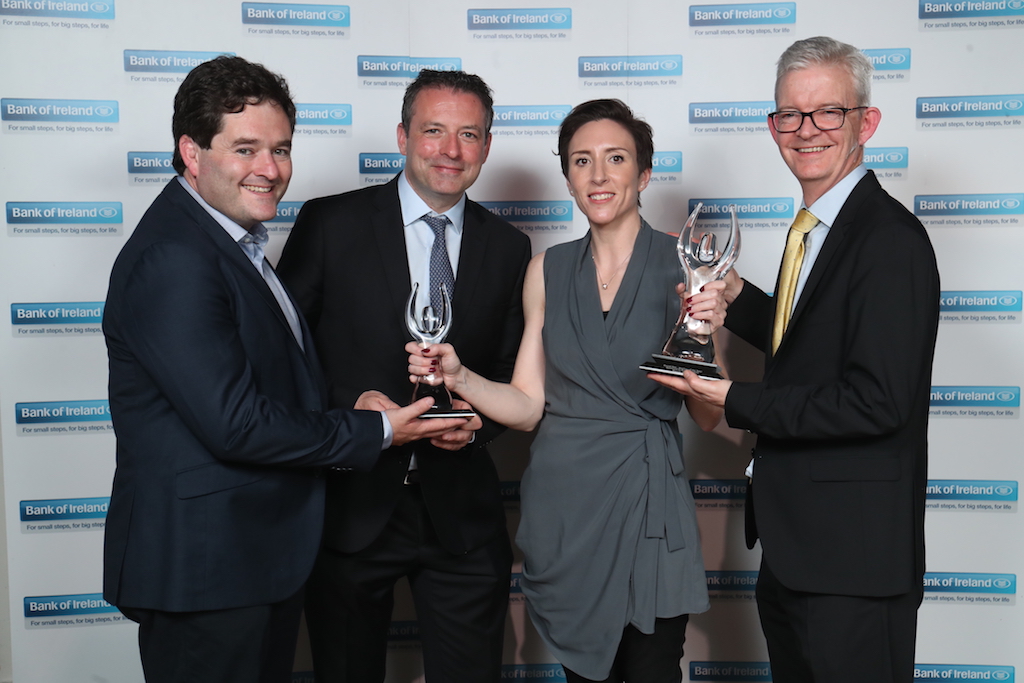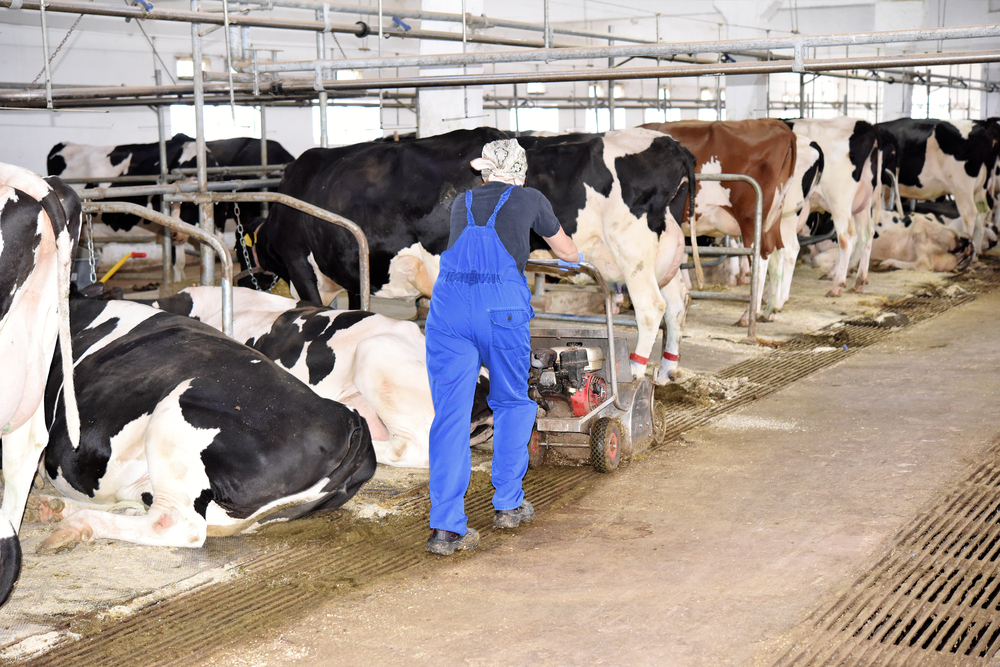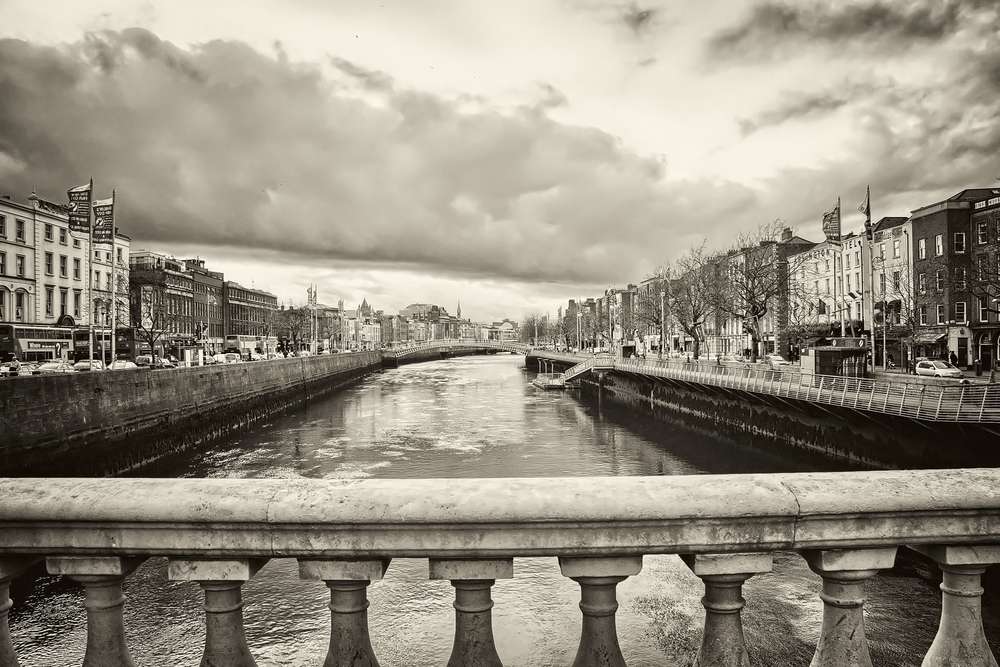As the search for Ireland’s National Enterprise Town of 2018 continues, we take a look back at 26 of Ireland’s historical enterprise towns and the businesses they were famous for.
Ireland has a rich history of enterprise and innovation. As the search for the National Enterprise Town of 2018 gathers pace, we compiled this list of towns in Ireland that are famous for different enterprises.
This is not an exhaustive list and we would be delighted to hear from you, especially if your town is famous for an interesting and historic enterprise. Follow us on Facebook and join in the conversation.
To read more about the National Enterprise Town Awards 2018 go here.
DONEGAL
Killybegs is one of the fishing capitals of Ireland. People have eaten fish in Donegal since prehistoric times, and the evidence for sea-going boats is also ancient. By the Early Christian period, fishing was a vital occupation. Commercial fishing was well established in Donegal by the 1400s, a lot of it controlled by the Lords of Tirconaill, the O’Donnells. Today the Irish fishing fleet is made up of about 1,900 large boats.
MONAGHAN
Clones is famous for its Lace. Clones Lace is an Irish Crochet Lace and has been around since 1847. Cassandra Hand, the wife of the local Church of Ireland minister, introduced the lace, inspired by Venetian point lace, as a famine relief project to the drumlin region of west Monaghan and south east Fermanagh. Thousands of women and children, through their creative lace-making, saved their families from the clutches of death and disease during the Great Famine.
LOUTH
Dundalk is now a high tech hub. However, it was once famous for shoe making. Arthur Halliday opened factories in the town and during their zenith in the 1970s, he employed over 1,250 people making shoes. Halliday was born in Bramley in Yorkshire where his family had a long tradition in shoe manufacturing. He died in 1984 aged 80.
SLIGO
Tubercurry is famous for tool making. The Gallagher family set up the Tool and Gauge tool-making factory which exported specialist tools across the globe.
LEITRIM
Manorhamilton is known for wood veneer products and car parts. The town has three successful firms employing over 200 staff between them in the specialist enterprises of wood veneer and car parts manufacturing.
CAVAN
Cootehill was once famous for the great linen markets that supported Cavan’s cottage linen industry. However, in the 1830s the big linen mills were established in the Lagan Valley, wiping out the cottage linen makers in Cavan who had to turn to farming cattle and corn.
MEATH
The Tara zinc mine in Navan, Co. Meath is Europe’s largest and one of the deepest in the world. Records of mining in the town go back as far as the Bronze Age, over 5,000 years ago. During the industrial revolution in the late 18th century, Ireland’s mining industry flourished.
MAYO
The Foxford Wollen Mills has been in operation since 1892. In that year, an Irish Sister of Charity Mother Agnes Morrogh-Bernard founded the ‘Foxford Woolen Mills’, with the help of the Congested District Board. Today, Foxford Woolen Mills exports garments around the world.
ROSCOMMON
Arigna is famous for coal mining. Mining in the town has happened for over 400 years. Regular work was uncommon in Connaught in the 19th and 20th centuries, and it is often said, “There was money in Arigna when there was no money elsewhere”. The industry also sustained the community of Arigna through the horrors of the famine years (1845 to 1852).
LONGFORD
One of the most important enterprises in this ‘Hidden Heartlands’ town is that of sawmills and timber processing. The timber processing firm Glennon Brothers was founded in 1913 by William Glennon and his brother James in Longford town. Today, Glennon Brothers supply an extensive range of products to major builders and providers in Ireland and the UK.
WESTMEATH
Mullingar is renowned for the high quality of its beef and veal. Weaned cattle from the west of the Shannon are fattened for market on the fertile grasslands of Meath and Westmeath. Westmeath is also home to many stud farms.
GALWAY
Galway city is famous for its arts and crafts, its festivals, its music, its theatre and hospitality industries not to mention horse racing. However, what Galway does best are Oysters. Make sure you eat the native oysters. They are simply divine little nutty creatures of salty, fishy goodness.
OFFALY
Offaly is the seat of so much heritage and culture with Clonmacnoise, an ancient monastic site near Shannonbridge, County Offaly, and Birr Castle, home of the world-famous Birr Castle telescope. However, as far as business goes, Offaly’s most enterprising town is Tullamore, the home of Tullamore Dew whiskey. The Grand Canal also runs through Tullamore. The canal thrived for about fifty years before the advent of the railway and brought much-needed trade and commerce to the town.
KILDARE
Kildare Town is famous for the equestrian industry. In 1682, the Curragh was considered the place to go for ‘all the nobility and gentry of the kingdom that either pretends to love, or delight in, hawking, hunting, or racing.’ The Curragh is now at the heart of the multi-million euro Irish bloodstock industry.
CLARE
Ennis is the traditional music capital of Ireland, if not the world. Trad music as an industry has spread far and wide and has been credited with influencing the careers of many global stars from Bob Dylan to Arcade Fire.
TIPPERARY
Tipperary is a county of many active areas and towns and is well known for cider making and dairy products. However, surely the county’s claim to fame is the foundation of the GAA on Saturday, November 1, 1884, at Lizzie J. Hayes’s Commercial Hotel on Main Street, Thurles. The Gaelic Athletic Association (GAA) is Ireland’s most significant sporting organisation. It is one of the great amateur sporting associations in the world. It is part of the Irish consciousness and plays a pivotal in Irish society that extends far beyond the games.
LAOIS
Durrow is famous for the Durrow Scarecrow Festival. It’s a quirky festival not to be missed and runs from July 29th until August 6th. It is the second largest festival in Laois next to Electric Picnic. Every cent raised during the nine days is poured back into the town to complete on-going projects and to begin planning for new initiatives.
KILKENNY
Kilkenny city is famous for its Stag and Hen parties, but historically it is one of the most significant agri-business centres in Ireland. Glanbia has its headquarters in Kilkenny city. The legacy of the former Woollen Mills has also made textiles an essential industry in Kilkenny.
CARLOW
Once the ‘sweetest town’ in Ireland, Carlow town is historically famous for its sugar factory. At its peak, the factory and its sister company, Erin Foods employed 1,800 people in Carlow. The factory closed in 2005 after 79 years in business.
WICKLOW
Various towns in Wicklow are famous for one thing – tourism. The ancient monastery of Glendalough is located in County Wicklow. Wicklow is renowned for its dramatic beauty, and the landscape has earned Wicklow the title of ‘the Garden of Ireland’.
WEXFORD
Possibly the most famous and historic ‘export’ to emerge from Wexford town and surrounding villages are its strawberries. Also, from Courtown to Curracloe, Rosslare to the Hook, the county is also renowned for its golden sand beaches and holiday towns.
WATERFORD
Waterford city’s most famous product is crystal. The origins of crystal production in Waterford city date back to 1783.
CORK
Midleton, famous for its whiskey, is one of Ireland’s most historic, enterprising towns. If you ever get the chance to taste one of Master Distiller Barry Crockett’s very rare blends, jump at it. It’s like an angel weeping on your tongue.
KERRY
Listowel is famous worldwide for its festivals. The town’s Writer’s Week and Harvest Festival are the top attractions. If you are looking for a little more drama, Killorglin’s Puck Fair in August is a must attend.
LIMERICK
The county Limerick village of Foynes played a significant role in Ireland’s aviation industry heritage. The small town is now known as an international shipping port, but during the 1930s and 40s, it was one of the biggest civilian airports in Europe. The Foynes Flying-Boat Museum chronicles this period very well. This lasted until shortly after Shannon Airport was opened just twenty miles across the estuary in 1942. You could say that Foynes set the foundation for Shannon. An interesting link between the two is Brendan O’Regan CBE, who started off as head of the catering function at Foynes and who went on to establish the world’s first duty-free shop at Shannon Airport. One of Foynes’ other claims to fame was inventing the Irish coffee to help keep passengers warm and relaxed on their long trans-Atlantic flights.
DUBLIN NORTH
This is very fascinating. Once upon a time on Railway Street, in Balbriggan stood the company of Smyth and Co. In the 1800s it was one of the most outstanding manufacturing companies not only in Ireland but the world. Queen Victoria bought all her stockings from the firm. And Victoria was by no means the only ‘royal’ to don the sought-after Balbriggan hose. The Empress of Austria ‘would die’ for Balbriggan hose, as well as Princess Eugenie and the Czarina. The business survived for almost 200 years, having been founded in 1780 by Joseph Smyth. Incredible.
DUBLIN SOUTH
Now located in Blanchardstown, Rathborne Candles has been in business as candle makers in Dublin since 1488 when the Rathborne family arrived from Chester to set up a company in Dublin’s Winetavern Street (near Christchurch). Rathborne’s candles were used to light Dublin’s streets in the 1700s. The company’s biggest customer remains the Roman Catholic Church. Today, in the era of electricity, the company produces church candles alongside high-end candles sold through Brown Thomas.




